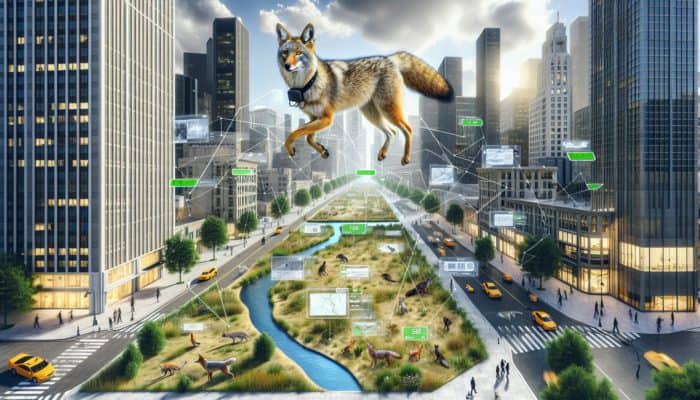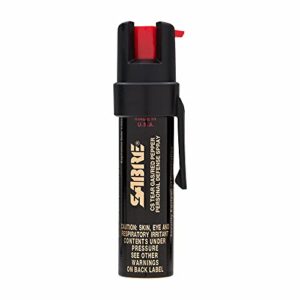Exploring Urban Predators: An In-Depth Guide to Their Impact
Identifying Urban Predators and Their Importance in Ecosystems

Urban predators are fascinating species that have successfully adapted to life in urban settings, creating distinct challenges and implications for both human populations and local wildlife. These remarkable animals can frequently be spotted in public parks, suburban neighborhoods, and even in city gardens, leading to a nuanced relationship between urban dwellers and wildlife. Understanding their behaviors and ecological contributions is essential for fostering coexistence. Common examples of urban predators include:
- Raccoons
- Coyotes
- Foxes
- Opossums
- Skunks
- Domestic cats
- Birds of prey such as hawks and owls
- In specific urban regions, alligators
Each of these urban predator species exhibits unique behavioral traits and adaptations that enable them to thrive in metropolitan areas, which can result in more frequent human-animal interactions. Gaining a comprehensive understanding of these dynamics is crucial for promoting a peaceful coexistence between urban wildlife and city residents.
Examining the Unique Behavioral Patterns of Urban Predators
To effectively coexist with urban predators, it is vital to grasp their daily routines and territorial instincts. Many urban predators are most active during the twilight hours, specifically at dawn and dusk, which can lead to increased encounters with people. Observing their particular behaviors can aid in anticipating their movements. Key behaviors that are important to monitor include:
- Foraging during the early morning or late evening hours
- Marking territory through recognizable scent markers
- Creating dens in discreet locations such as garages or beneath porches
- Exhibiting boldness in human-inhabited areas, especially when food sources are easily accessible
Understanding these behavioral patterns enables urban residents to adjust their habits and surroundings to minimize the likelihood of unwelcome encounters with these intriguing creatures, ultimately fostering a safer coexistence.
Understanding the Allure of Urban Areas for Predatory Species
Urban environments offer a wealth of opportunities for various predator species. The abundant availability of food sources, including discarded waste, pet food, and small mammals, serves as a significant draw for these animals. Additionally, urban structures provide shelter from adverse weather, making cities attractive havens. The increasing encroachment of urban development often leads to the loss of natural habitats, pushing wildlife to seek refuge in urban landscapes. This trend is influenced by several factors, such as:
- Enhanced food availability, including populations of rodents and leftover human food
- Destruction of natural habitats caused by human activities
- Decreased competition from other predators
- Favorable microclimates created within urban settings
These factors highlight the growing prevalence of urban predators and their integration into urban life, emphasizing the need for informed management strategies to promote harmony.
Implementing Strategies for Peaceful Coexistence with Urban Predators

Living harmoniously with urban predators does not have to be a source of concern; rather, it can provide an opportunity for peaceful coexistence. By implementing strategic measures, residents can significantly reduce conflicts while enhancing safety. Effective strategies include:
- Securing waste containers with tightly fitted lids to prevent access
- Bringing pet food indoors at night to deter scavengers
- Eliminating hiding spots by trimming overgrown bushes and clearing debris
- Installing motion-activated lights to deter nocturnal wildlife
By making these simple adjustments to daily practices, residents can cultivate an environment conducive to the thriving of both humans and urban predators, minimizing the potential for conflict.
Exploring the Ecological Contributions of Urban Predators
Urban predators play an essential role in local ecosystems, influencing both wildlife populations and community dynamics. Their presence can lead to beneficial outcomes, such as regulating rodent populations and maintaining equilibrium within the food web. However, they can also negatively impact local wildlife, particularly smaller species that may fall prey. The interactions between urban predators and their environments encapsulate:
- Reduction of overpopulated species, contributing to healthier ecosystems
- Potential competition with native species, affecting local biodiversity
- Influencing urban flora and fauna through their predation habits
- Creating pathways for disease transmission among wildlife populations
Understanding these complex interactions is vital for developing effective management strategies that benefit both urban wildlife and human communities.
Insights from Experts on Urban Predator Awareness
Monitoring Urban Predator Populations: Expert Techniques

Experts utilize a variety of sophisticated techniques to monitor urban predator populations, blending advanced technology with field observations for comprehensive data collection. This may involve the use of GPS collars, camera traps, and community reporting systems. For example, GPS collars enable real-time tracking of movement patterns, offering invaluable insights into how these animals navigate urban landscapes. Furthermore, camera traps can capture images of predators in their natural behaviors, assisting in assessing population densities and behavioral patterns. These methods provide a holistic understanding of urban predator dynamics, informing management strategies aimed at promoting coexistence.
Best Practices for Effective Urban Predator Management
Managing urban predators effectively necessitates a collaborative approach involving local communities, wildlife experts, and policymakers. Recommended best practices include:
- Creating public awareness campaigns centered around urban predators
- Implementing community-based monitoring programs to track wildlife
- Establishing clear guidelines for safely securing trash and pet food
- Encouraging community clean-up initiatives to decrease attractants
Each of these steps fosters community cooperation and proactive measures, leading to successful management outcomes that enhance safety for residents while promoting sustainability for urban wildlife.
Leveraging Expert Knowledge to Enhance Community Safety
Accessing expert insights can significantly bolster community safety and mitigate conflicts with urban predators. By forming relationships with wildlife experts, communities can obtain tailored advice on addressing local wildlife issues. Educational workshops empower residents with knowledge about urban predators, increasing their understanding of behaviors and needs. Such collaborations can yield:
- Enhanced community awareness regarding safety practices
- Improved local policies informed by scientific research
- Dedicated resources for managing urban wildlife
- Strengthened community bonds through shared objectives
By utilizing expert knowledge, communities can work towards creating safer urban environments while recognizing the critical role of predators in local ecosystems.
Ensuring Safe Coexistence: Practical Tips for Urban Residents
Urban residents can adopt effective practices to minimize risks associated with urban predators. Safety begins with awareness and practical strategies that promote peaceful coexistence. Expert-recommended tactics include:
- Maintaining a safe distance from urban predators if encountered
- Using noise deterrents, such as clapping or shouting, to scare off predators
- Educating oneself and family about predator behaviors and safety
- Collaborating with neighbors to implement community safety measures
By adopting these responsible practices, residents not only enhance their personal safety but also foster a community culture of coexistence that benefits both humans and wildlife.
Effective Strategies for Preventing Encounters with Urban Predators
Safeguarding Your Home Against Urban Wildlife
Securing your home against urban predators is vital for preventing unexpected encounters. Simple, proactive measures can considerably deter these animals. Effective home security tips include:
- Fencing your yard with a solid barrier that is at least six feet high
- Using locks on gates to prevent unauthorized access
- Installing motion-activated lights around the property
- Keeping outdoor grills and patios clean and free of food residues
By implementing these measures, homeowners can create an environment that minimizes the likelihood of attracting urban predators, ensuring a safer living space for all residents.
Responding Appropriately to an Urban Predator Encounter
Knowing how to react during a predator encounter can significantly influence safety outcomes. If you find yourself face-to-face with an urban predator, it is vital to remain calm and adhere to the following guidelines:
- Do not run; this may trigger the predator’s chase instinct.
- Make yourself appear larger by raising your arms and standing tall.
- Make loud noises to scare the animal away, using your voice or clapping.
- Back away slowly, maintaining eye contact with the predator without turning your back.
Understanding these appropriate responses can help prevent dangerous situations while encouraging respectful interactions with urban wildlife.
The Necessity of Community Education Programs
Community education is vital for alleviating fear and enhancing safety concerning urban predators. By informing residents about the behaviors and needs of these animals, communities can foster a more positive outlook on urban wildlife. Educational initiatives may encompass:
- Workshops on identifying urban predators and understanding their behaviors
- Information sessions on securing properties against wildlife
- Community forums for sharing concerns and experiences
- Engagement activities, such as nature walks to observe urban wildlife
These initiatives not only educate residents but also cultivate a culture of coexistence, ultimately enhancing overall community safety.
Detecting Signs of Urban Predator Presence
How to Identify Tracks and Scat of Urban Predators
Recognizing signs of predator activity is crucial for early detection and effective management. Being able to identify tracks and scat can provide valuable insights into the types of predators inhabiting your area. Each species leaves distinct tracks; for instance, a coyote track is generally larger than that of a domestic dog and features a more defined shape. Scat also varies among species; raccoon scat, for example, often contains remnants of fruits and other foods they have consumed. Common signs to look for include:
- Footprints in soft soil or snow
- Scat with identifiable contents
- Scratches on trees or fences indicating territory marking
- Hair caught on fences or shrubs
By familiarizing yourself with these signs, you can monitor local predator activities more effectively and adjust your safety strategies accordingly.
Understanding the Types of Damage Caused by Predators
Urban predators can cause various types of damage, ranging from property destruction to predation of pets or livestock. Recognizing these signs can facilitate timely action to address potential issues. Indicators of predator activity on your property may include:
- Disturbed rubbish or bird feeders
- Scratches on doors or fences
- Missing pets or livestock
- Signs of digging or denning beneath structures
Being vigilant and understanding these signs can empower homeowners to take appropriate measures to mitigate risks associated with urban predators.
Reporting Sightings of Urban Predators Effectively
Reporting urban predator sightings is essential for effectively tracking and managing predator populations. Residents should document their observations and communicate them to local wildlife authorities. Steps to report sightings include:
- Noting the time, location, and a description of the animal.
- Taking photographs if it is safe to do so.
- Contacting local wildlife agencies or utilizing community reporting apps.
- Sharing your information with neighbors to raise awareness.
This proactive approach can assist authorities in monitoring urban predator populations, leading to more effective management strategies and increased safety for residents.
Strategies for Harmonious Coexistence with Urban Predators
Key Strategies for Safe Coexistence
Successfully coexisting with urban predators requires a combination of understanding and adaptability. Implementing well-thought-out strategies can reduce risks and promote a harmonious relationship. Essential strategies include:
- Establishing community guidelines for wildlife interactions
- Promoting responsible pet ownership, such as keeping pets indoors at night
- Creating green spaces that support biodiversity and maintain a natural balance
- Facilitating community discussions on best safety practices
By adopting these strategies, communities can cultivate environments where both humans and urban predators can thrive together, ensuring a safe and balanced ecosystem.
Recognizing the Benefits of Coexisting with Urban Predators
The advantages of coexisting with urban predators extend far beyond mere tolerance. Embracing these creatures enhances biodiversity and promotes ecological health. The positive impacts include:
- Natural pest control through the predation of rodents and insects
- Heightened public interest in wildlife conservation efforts
- Increased awareness of urban ecosystems and their complexities
- Opportunities for educational programs that foster empathy towards wildlife
These factors highlight the importance of viewing urban predators as integral components of urban ecosystems rather than mere threats to human safety.
Community Initiatives That Encourage Coexistence
Community-led initiatives are pivotal for creating a harmonious environment alongside urban predators. Successful programs often emphasize education, collaboration, and proactive management strategies. Effective initiatives may include:
- Neighborhood watch programs dedicated to monitoring urban wildlife
- School partnerships with wildlife organizations for educational outreach
- Community clean-up events to lessen attractants
- Workshops on safe interactions with local wildlife
Through these efforts, communities can promote coexistence while ensuring safety and enhancing their understanding of urban wildlife.
Enhancing Public Understanding of Urban Predators Through Education
Education serves as a powerful vehicle for increasing public awareness and safety regarding urban predators. Effective strategies for educating communities about these animals encompass:
- Hosting informational sessions led by wildlife experts
- Creating educational materials, such as brochures and online resources
- Utilizing social media platforms to disseminate tips and information
- Encouraging local schools to incorporate wildlife education into their curricula
These strategies empower residents to make informed decisions, leading to safer communities and a deeper respect for urban wildlife.
Policies That Support Effective Urban Predator Management
Robust policies and legislation play a vital role in managing urban predators. Local governments must develop frameworks that balance safety with conservation efforts. Key focus areas include:
- Implementing regulations for responsible pet ownership
- Establishing guidelines for wildlife feeding and attractants
- Enhancing funding for urban wildlife management programs
- Promoting community involvement in policy development
These measures can create a sustainable approach to managing urban predators that benefits both residents and wildlife, ensuring a harmonious coexistence.
Research-Backed Benefits of Urban Predator Awareness
Reducing Conflicts Through Enhanced Community Awareness
Awareness initiatives are crucial in minimizing conflicts between humans and urban predators. By educating communities about predator behaviors, safety measures, and coexistence tactics, the incidence of fear and misunderstanding is significantly diminished. Research indicates that communities with robust awareness programs experience:
- Fewer wildlife-related incidents and complaints
- Increased willingness among residents to adopt safety measures
- Greater collaboration among community members in wildlife monitoring
- Heightened appreciation for the role of predators in urban ecosystems
These benefits underscore the importance of ongoing education and community engagement in promoting coexistence and understanding of urban wildlife.
The Positive Impact of Public Awareness on Biodiversity
Awareness initiatives can greatly support biodiversity by encouraging responsible behaviors and coexistence strategies among urban residents. When communities recognize the significance of predators in sustaining ecological balance, they are more likely to:
- Support conservation efforts aimed at safeguarding urban wildlife habitats
- Engage in citizen science programs that monitor local biodiversity
- Advocate for policies that ensure safe coexistence with urban predators
- Cultivate a culture of respect towards all wildlife
These factors contribute to healthier ecosystems and richer urban biodiversity, illustrating the essential role of education in urban wildlife management.
The Influence of Public Policy on Predator Awareness
Public policy significantly impacts urban predator awareness and management. Strong policies can facilitate educational programs and community initiatives aimed at promoting coexistence. Areas where public policy can make a substantial difference include:
- Funding for research on urban wildlife dynamics
- Incentives for community-based wildlife management programs
- Regulations on wildlife feeding and attractants
- Support for habitat preservation and restoration projects
By prioritizing these elements, policymakers can ensure that urban predator awareness is integrated into community planning and development, fostering safer urban environments for all residents.
Educating Children on Urban Predators
Essential Knowledge for Children About Urban Predators
Teaching children about urban predators is crucial for ensuring their safety and nurturing respect for wildlife. Children should acquire foundational facts regarding these animals, including their behaviors, habitats, and the importance of maintaining a safe distance. Important topics to cover include:
- The types of urban predators they might encounter
- How to recognize signs of predator activity
- Safe practices for when encountering a predator
- The ecological role of predators within the ecosystem
By imparting this knowledge, children can develop a healthy understanding of urban wildlife and the significance of coexistence, ultimately preparing them for future interactions with these fascinating creatures.
The Role of Educational Programs and Workshops
Educational programs in schools are vital for teaching children about urban predators. Implementing interactive workshops and curriculum-based lessons can effectively engage students. Successful components of these programs include:
- Hands-on activities, such as tracking and identifying local wildlife
- Guest lectures from wildlife experts to provide real-world insights
- Field trips to local parks to observe urban ecosystems
- Creative projects that encourage children to express their learning
These initiatives not only educate children but also inspire them to become advocates for wildlife conservation within their communities, fostering a sense of responsibility toward the environment.
How Parents Can Reinforce Predator Safety Lessons at Home
Parents play a vital role in reinforcing predator safety lessons learned in school. By engaging in discussions and activities related to urban predators, parents can deepen their children’s understanding of these animals. Effective strategies include:
- Encouraging children to share what they have learned in school about wildlife
- Setting up family outings in nature to observe wildlife responsibly
- Creating a safe space for open discussions about fears and experiences with urban predators
- Modeling responsible behaviors regarding interactions with wildlife
By actively participating in these educational efforts, parents can help cultivate a sense of stewardship in their children toward urban wildlife, ensuring they grow up with a deep respect for nature.
Effective Community Outreach and Public Awareness Campaigns
Community outreach initiatives can significantly enrich children’s understanding of urban predators. Effective campaigns may include:
- Family-friendly events featuring wildlife education booths
- Collaborative projects between schools and local wildlife organizations
- Interactive programs that promote safe interactions with wildlife
- Social media campaigns that disseminate educational content and practical tips
These efforts not only educate children but also foster a collective community understanding of how to coexist safely with urban predators, promoting a culture of respect for wildlife among all age groups.
Interactive Learning Tools and Resources for Understanding Urban Predators
Engaging learning tools can effectively enhance children’s understanding of urban predators. Interactive resources, such as apps, games, and educational websites, can provide immersive experiences. Useful tools include:
- Mobile apps for tracking and identifying local wildlife
- Online games that teach about ecosystems and predator-prey relationships
- Interactive educational videos showcasing urban wildlife
- Resource websites offering printable materials for children
These tools can make learning about urban predators enjoyable and engaging, encouraging children to explore and appreciate their local environments while nurturing curiosity about the natural world.
Dispelling Myths and Clarifying Facts About Urban Predators
Common Misconceptions Surrounding Urban Predators
Misinformation about urban predators can lead to unnecessary fear and ineffective management practices. Debunking common myths is vital for cultivating a more informed community. Some prevalent misconceptions include:
- All urban predators pose a danger to humans.
- Urban predators will attack pets if left outside.
- Predators like coyotes are overly aggressive in urban settings.
- Feeding urban wildlife is beneficial for their survival.
By clarifying these misunderstandings, communities can foster a more balanced perspective on urban wildlife behavior, alleviating unfounded fears and promoting coexistence.
Understanding the Real Risks Associated with Urban Predators
Recognizing the genuine risks posed by urban predators is essential for developing appropriate responses. While encounters can be unsettling, the reality is that most urban predators prefer to avoid human interactions. Actual risks include:
- Minor conflicts with pets if left unattended
- Occasional property damage, such as digging in gardens
- Transmission of diseases among wildlife populations
- Human-wildlife interactions leading to fear and misunderstanding
Recognizing these risks allows communities to implement effective safety measures while respecting urban wildlife and acknowledging their role within the ecosystem.
How to Differentiate Fact from Fiction Regarding Urban Predators
Learning to separate myths from facts is critical for effective predator awareness. Residents can evaluate predator-related information by:
- Consulting local wildlife agencies for accurate data
- Participating in community workshops led by experts
- Engaging with reputable wildlife organizations and utilizing their resources
- Encouraging open discussions within the community about wildlife issues
By fostering critical thinking and informed discussions, communities can cultivate a more accurate understanding of urban predators, enhancing coexistence and effective wildlife management strategies.
Proven Strategies for Enhancing Urban Predator Awareness
Utilizing Technology to Boost Predator Awareness
Technology plays a pivotal role in monitoring and managing urban predator populations. Various tools and applications provide innovative solutions for both experts and residents. Examples include:
- Mobile apps that enable users to report sightings and share information
- Camera traps that capture nocturnal activities for research and monitoring
- GIS mapping systems to track predator movements and hotspots
- Social media platforms for community engagement and awareness campaigns
These technological advancements significantly enhance predator awareness efforts, allowing for more effective management strategies while fostering safer coexistence between urban wildlife and residents.
Effective Community-Based Approaches to Predator Awareness
Community involvement is essential for the success of urban predator awareness programs. Effective community-based strategies include:
- Establishing partnerships between residents and local wildlife experts
- Creating volunteer programs for monitoring wildlife activity
- Hosting neighborhood meetings for sharing experiences and strategies
- Collaborating with schools to integrate predator education into curricula
By actively engaging the community, awareness initiatives can promote a culture of coexistence and safety, enhancing the well-being of both urban wildlife and human residents.
The Role of Wildlife Organizations in Promoting Predator Awareness
Wildlife organizations play a crucial role in educating the public about urban predators. Their contributions include:
- Providing expert knowledge and resources for community education
- Researching urban wildlife dynamics and effective management strategies
- Leading outreach programs that connect residents with local wildlife
- Advocating for policies that support predator conservation and management
These efforts help bridge the gap between communities and wildlife, fostering safer interactions while deepening understanding of urban ecosystems and their complexities.
Frequently Asked Questions About Urban Predators
What Are the Most Common Urban Predators Found in Cities?
The most prevalent urban predators include raccoons, coyotes, foxes, opossums, skunks, and various birds of prey, each uniquely adapted to thrive in city environments.
How Can I Identify If an Urban Predator Is Present in My Area?
Signs of urban predator activity include tracks, scat, disturbed garbage, and sightings of the animals themselves, particularly during twilight hours.
What Steps Should I Take If I Encounter a Predator?
Remain calm, avoid running, make yourself appear larger, and back away slowly while making noise to encourage the predator to leave the area.
Are Urban Predators a Threat to Pets?
While urban predators generally avoid human interactions, they may pose a risk to unattended pets. It is advisable to keep pets secured indoors at night.
How Can I Promote Safe Coexistence with Urban Predators?
Securing your rubbish, removing attractants, and educating yourself about local wildlife behaviors can facilitate peaceful coexistence with urban predators.
What Educational Resources Are Available to Learn About Urban Predators?
Many local wildlife organizations offer workshops, educational materials, and online resources designed to educate residents about urban predators and their behaviors.
How Can I Report a Sighting of an Urban Predator?
To report sightings, contact local wildlife agencies, documenting details such as time, location, and any identifiable characteristics of the animal observed.
Are Urban Predators Beneficial to City Ecosystems?
Yes, urban predators play a crucial role in controlling populations of rodents and other small animals, thereby maintaining a balanced urban ecosystem.
What Myths Are Commonly Associated with Urban Predators?
Common myths include the belief that all urban predators are aggressive or that feeding them aids in their survival, both of which can lead to misunderstandings and mismanagement.
How Can Technology Assist in Managing Urban Predator Populations?
Technology aids monitoring through GPS tracking, camera traps, and community reporting apps, enhancing awareness and management strategies for urban wildlife.
Explore more with us on X!
The post Urban Predator Awareness: Protecting Communities appeared first on Survival Bite.
The Article Urban Predator Awareness: Safeguarding Our Communities Was Found On https://limitsofstrategy.com








 The stolen money can be replaced. You or a loved one can not. Carry a little cash separate from your other funds in an accessible place.
The stolen money can be replaced. You or a loved one can not. Carry a little cash separate from your other funds in an accessible place.